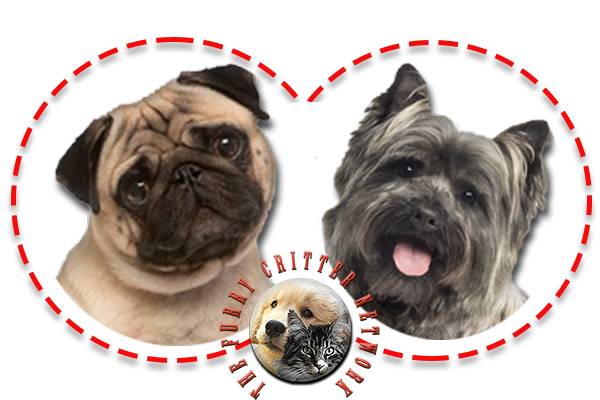Behavior
Affectionate, intelligent, and gentle, this little lap dog is a good-natured pet but can be exclusive and touchy. The rambunctious Pug puppy becomes a calm, poised adult. He seldom barks and is not a watchdog, despite being reserved toward strangers. He needs firm, very early training.
This breed is often described by the Latin phrase multum in parvo, or "much in little" or "a lot of dog in a small space", alluding to the pug's remarkable and charming personality, despite its small size. Pugs are strong willed but rarely aggressive, and are suitable for families with children. The majority of the breed is very fond of children and sturdy enough to properly play with them. Depending on their owner's mood, they can be quiet and docile but also vivacious and teasing. Pugs tend to be intuitive and sensitive to the moods of their owners and are usually eager to please them. Pugs are playful and thrive on human companionship. They also tend to have a snoozy nature and spend a lot of time napping. Pugs are often called "shadows" because they follow their owners around and like to stay close to the action, craving attention and affection from their owners.
He is perfectly suited to apartment life. Not being very athletic, short walks suffice. He hates being left alone or separated from his owner. He should be kept out of intense heat since, like all brachycephalic dogs, he is susceptible to respiratory blockage. His eyes are sensitive to dust and need regular checking, as do the wrinkles on his face. He must be brushed twice or three times a week.
Health
Pugs are prone to brachycephalic airway obstructive syndrome (BAOS) which causes respiratory distress in short-snouted breeds. Pugs have elongated palates. When excited, they are prone to "reverse sneezing" which causes them to quickly (and seemingly laboriously) gasp and snort. The veterinary name for this is pharyngeal gag reflex and it is caused by fluid or debris getting caught under the palate and irritating the throat or limiting breathing. Reverse sneezing episodes are usually not harmful, and massaging the dog's throat or covering its nose in order to make it breathe through its mouth can often shorten a sneezing fit.
Some pugs are also born with stenotic nares (pinched nostrils) which can inhibit their breathing. In serious cases, it makes breathing even more difficult and puts added pressure on the larynx. In some cases, the dog could pass out from blocked airways. If this happens, one should inquire with their veterinarian whether or not surgery is needed to open the nostrils.
Protruding eyes and eye prolapse is a common problem among pugs and other brachycephalic breeds and can be caused by a trauma to the head or neck. While the eye can usually be pushed back into its socket by the owner or by a vet, veterinary attention is usually advisable. If the prolapse happens on a regular basis, the pug might require surgery.
Pugs have many wrinkles in their faces, so owners will often clean inside the creases to avoid irritation and infection. If this is not done, the dog may develop a condition known as skin fold dermatitis.
An abnormal formation of the hip socket, known as hip dysplasia, affected nearly 64% of pugs in a 2010 survey performed by the Orthopedic Foundation for Animals; the breed was ranked the second worst-affected by this condition out of 157 breeds tested.
Pugs are one of several breeds that are more susceptible than other dogs to demodectic mange, also known as "demodex". This condition is caused when parasitic mites, that are often present in a dog's skin without causing symptoms, are allowed to do damage because their host has a weakened immune system. It is a problem for many young pugs, although not usually a major one, and is easily treatable, but some are especially susceptible and present with a systemic form of the condition. This vulnerability is thought to be genetic and breeders will avoid producing puppies from adults who have this condition.
In 2008, an investigative documentary carried out by the BBC found significant inbreeding between pedigree dogs, with a study by Imperial College, London, showing that the 10,000 pugs in the UK were so inbred that their gene pool was the equivalent of only 50 individuals.
Pugs can suffer from necrotizing meningoencephalitis (NME), also known as pug dog encephalitis (PDE), an inflammation of the brain and meninges. NME also occurs in other small dogs, such as the Yorkshire Terrier, Maltese, and Chihuahua. There is no known cure for NME, which is believed to be an inherited disease. Dogs usually die or have to be put to sleep within a few months of onset, which, in those susceptible to this condition, is mostly between six months and three years of age.
This breed, along with other brachycephalic dogs (e.g., boxers, bulldogs), are also prone to hemivertebrae. The curled tail of a British bulldog is an example of a hemivertebrae, but when it occurs not in the coccygeal vertebrae but in other areas of the spine, it can cause paralysis. The condition occurs when two parts of a spinal vertebra do not fuse properly while a young pug is still growing, resulting in an irregularly shaped spinal cavity which can put pressure on the spinal cord.






